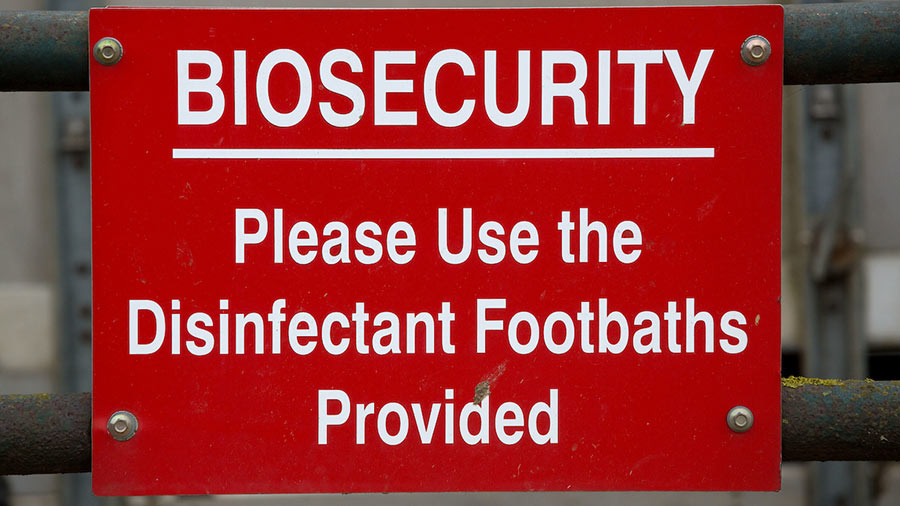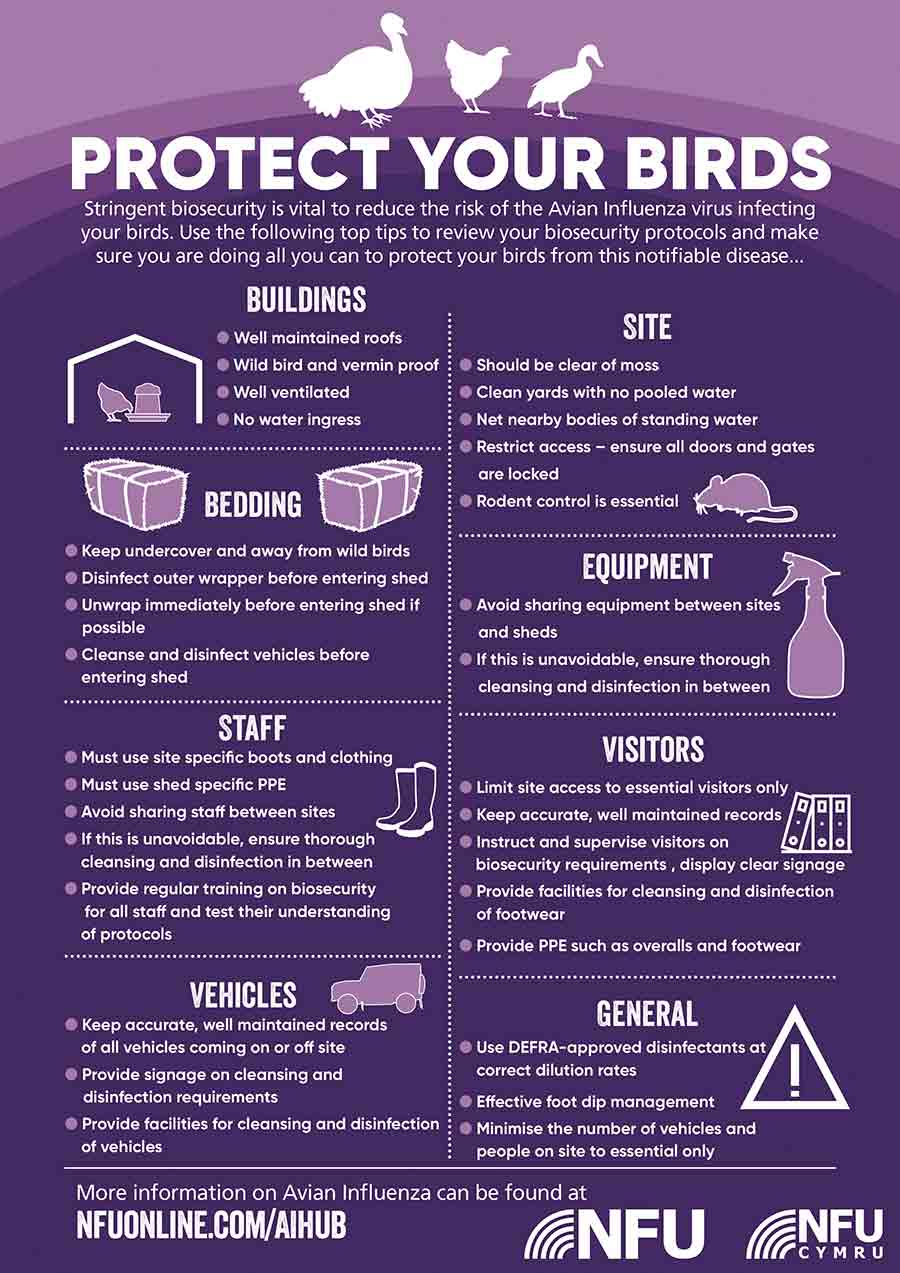Biosecurity needs revising as second avian flu wave threatens
 © Tim Scrivener
© Tim Scrivener Vets and poultry sector leaders have urged flock-keepers to redouble their efforts on biosecurity, with avian flu cases rising and a further surge in the virus expected imminently.
At 70 cases, UK chief vet Christine Middlemiss said this winter’s outbreak had already eclipsed any seen previously in Great Britain.
The figure is already almost three times higher than the 2020-21 outbreak. Ms Middlemiss warned that a second surge in cases was likely.
She told an NFU members’ advisory webinar that there was typically a first wave of cases before Christmas, when infected migratory birds arrived to overwinter.
See also: Avian flu: Advice for poultry keepers as housing order looms
As reinfections occurred, there was a lag before a second wave in late January and early February, she warned.
The only way to bring down the risk level to “low” was to review, tighten and rigidly apply biosecurity measures, she said.
Current risk levels
- Very high risk from incursion of infected birds
- High risk of infection into poultry flocks where biosecurity is poor
- Medium risk where biosecurity is good
Investigation findings
Ms Middlemiss revealed data gained from government vet investigations of infected flocks to help poultrykeepers assess risks.
They showed UK poultry units generally had good perimeter biosecurity, she said. But there was an over-reliance on these perimeter measures.
It was the internal biosecurity that was letting the sector down, she said, leading to the high number of breakdowns.
Among many factors within units, investigations had traced outbreaks back to bedding, inadequate building maintenance and poor communication.
Poultrykeepers were often unaware that, at 4C, the virus could survive for 21 days on surfaces. Neither did they know it could be introduced inside fences by wild birds and their droppings, Ms Middlemiss said.
Contact with infected surfaces, through clothes, equipment and bedding, could then carry the virus straight into the shed if workers were unaware of the risk.
Communication
Many farms which had been infected had a comprehensive biosecurity checklist but had failed to communicate what was required to all workers.
Ms Middlemiss said it was imperative that owners trained and reinforced expectations to all workers, including casual labour, weekend staff and agency workers.
The key was for all workers to think about the last metre before entering a shed. Even if there was only a 10m gap between one building and the next, there was potential to pick up the disease right up to that last metre, she said.
Hygiene
Staff must be scrupulously clean, particularly on units shared with operations such as packing or incineration. Boots and overalls must be changed, and foot dips used and properly maintained.
Teams should be aware that all organic matter must be removed, and disinfection processes must be in line with the chemical manufacturer’s advice.
Basic errors
Speaking after the webinar, NFU chief poultry adviser Aimee Mahony said the investigations also revealed that simple errors had led to breakdowns.
In some cases, investigators found staff had unwrapped bedding bales inside a unit rather than outside, leading to an outbreak. Covers must be removed outside because they may have been contaminated by wild birds, Ms Mahony said.
Building maintenance was also key because water ingress and flooding had introduced the virus into flocks, she added. And gaps in cladding or doorways had allowed wild birds directly into units to spread the disease.
Labour shortage
An added difficulty reported to the NFU has been the post-Brexit labour shortage.
Ms Mahoney said skilled labour was spread more thinly across the sector and training staff to understand what was required had become more complicated.
The NFU has compiled a revised checklist of information that includes the information gained by the government’s veterinary investigations.

